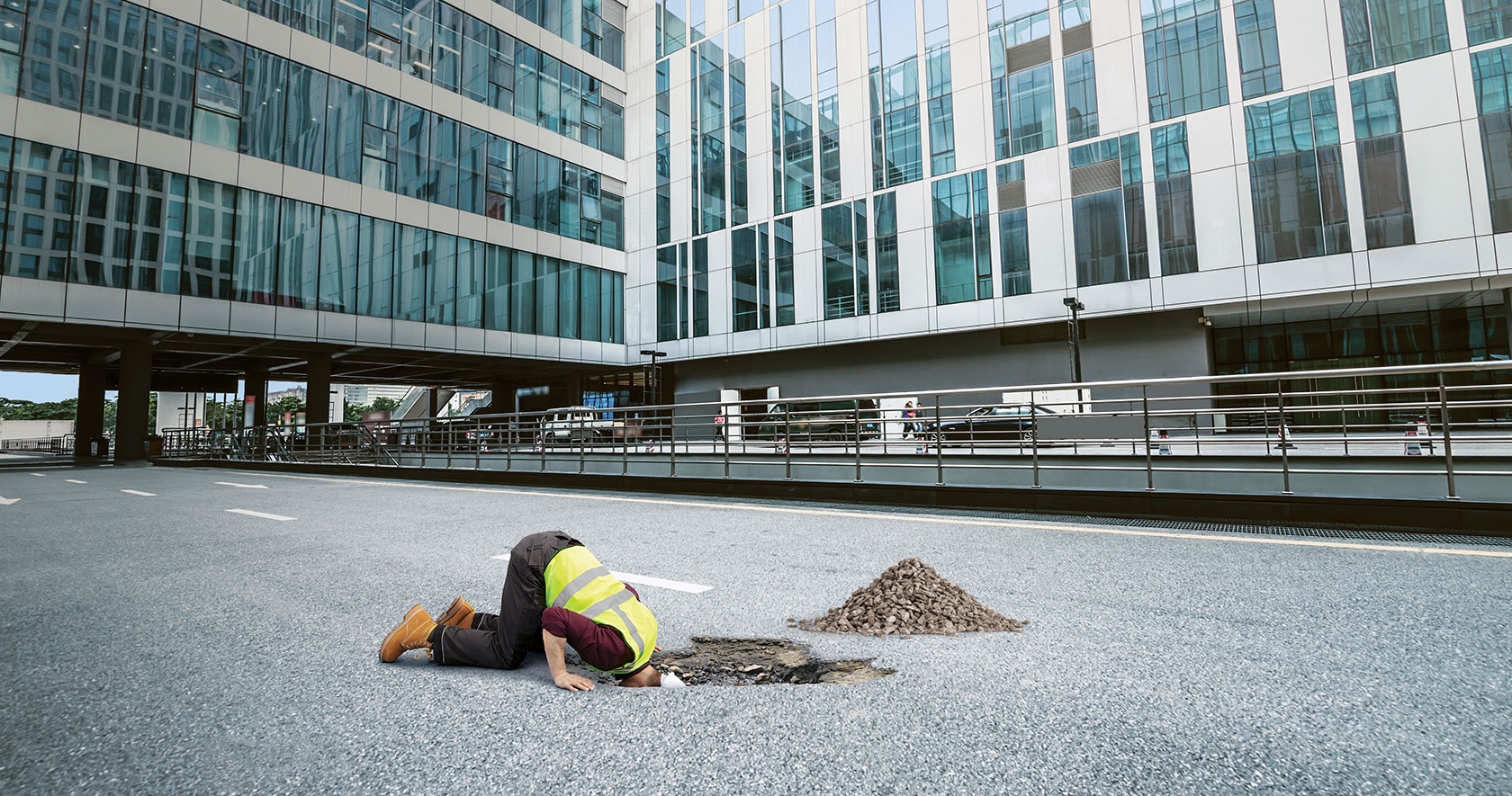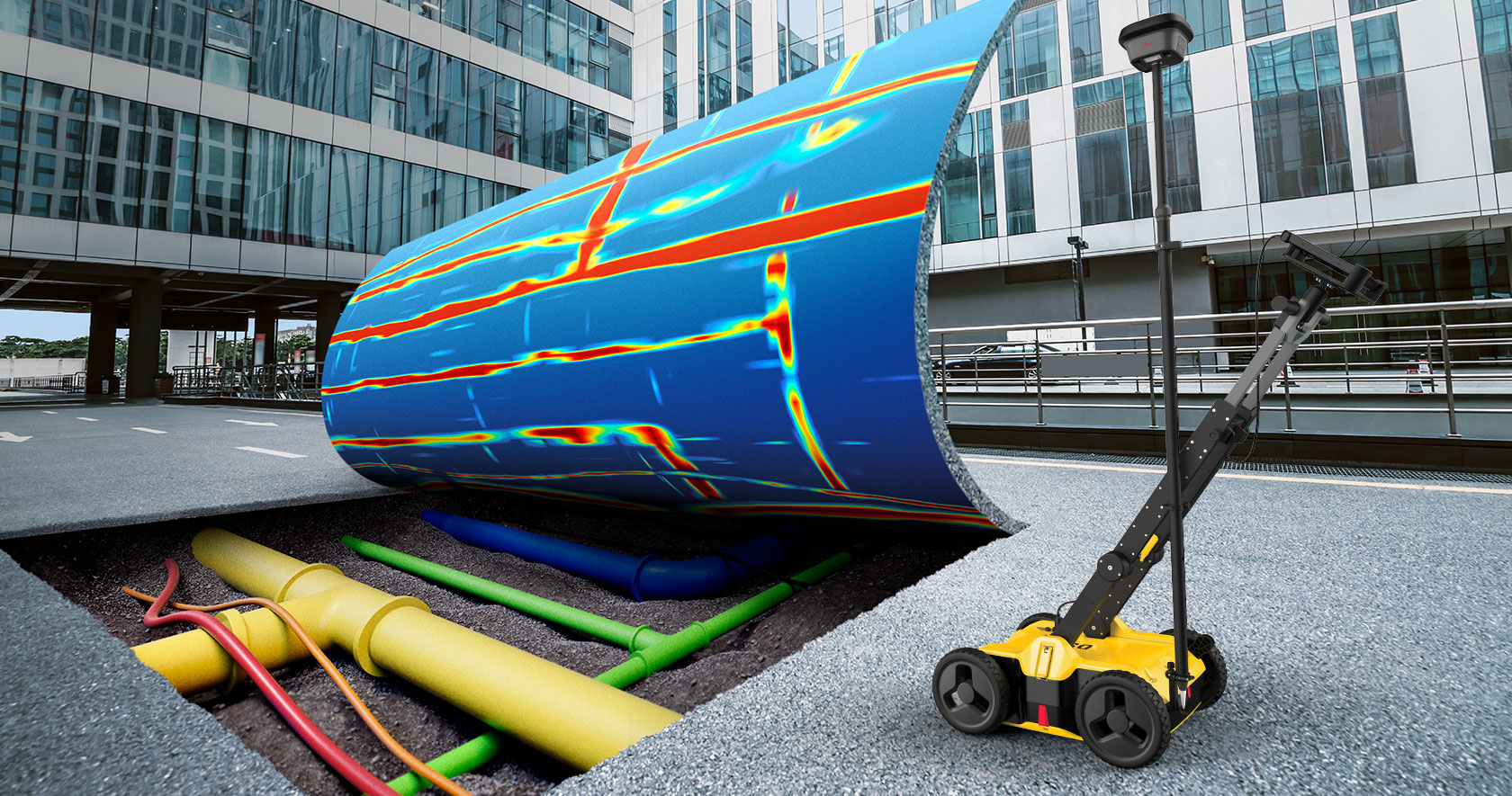What lurks below
Expert insight

The labyrinth of pipelines and utilities buried under modern cities pose a significant risk to projects. In 2018, workers reported more than 330,000 underground utilities strikes in the United States and more than 11,000 in Canada. That was an increase of about 13.5% since 2015, numbers show.
On average, there is a utility strike somewhere in North America every 10 seconds, but it’s a problem that doesn’t have to exist, and there is a clear solution. In eliminating the threat, organizations can save money — not to mention headaches or even the potential for loss of human life. Data from The Civil Quarterly (TCQ), a new publication launched in July 2020 from Dodge Data & Analytics, revealed contractors in heavy construction are facing supply chain issues and other challenges in keeping their jobsites going amid COVID-19.
But digging deeper, this brand-new data also revealed that 63% of the contractors contacted for the study are currently using or considering using utility detection tools. A staggering two-thirds of contractors shared a new prioritization on safety investments overall, to include utility detection.
According to a somewhat dated Purdue University study, which remains the most commonly cited in the industry, companies can save $4.62 for every dollar spent on utility detection. Other estimates show potentially more significant cost savings, possibly reaching $18 for every dollar spent. Regardless, the savings can total billions of dollars every year. Shutting down a project because of a utility strike can easily cost companies $2,000 or more per hour, a significant impact on the bottom line of any company or project.
Options to detect

Many utility strikes result from excavation mistakes. Others are made because crews didn’t report they were digging or because of errors in reporting underground utilities’ existence. There are two primary technologies to help crews detect underground utilities: electromagnetic locators and ground-penetrating radar.
These technologies work differently, so one is not necessarily superior. Electromagnetic locators effectively locate metal or metallicized utilities, while ground-penetrating radar can help find other buried items, such as plastic pipes. Remaining vigilant while excavating a jobsite remains of paramount importance as neither tool is guaranteed to find everything, particularly items found buried deeper than 15 feet. But, working in tandem, these tools capture the overwhelming majority of buried utilities.
A Growing Field
The field of super subsurface utility engineering continues to evolve as it matures. It is poised for significant growth as projects become increasingly complex and budgets tighten, making mistakes even more costly.
There are three emerging sections within the utility detection arena: Utility companies, specialized detection companies, and construction companies that take it on themselves. Now there are new — and easier-to-use tools — that are simplifying utility detection across the industry.
Today, 40% of contractors use utility detection tools, while another 23% use or consider the technology, according to TCQ.
Be wary of free
There are free options for detecting underground utilities. While these are tempting, it’s important to remember the old adage, “you get what you pay for.”
An estimated 65% of the buried utility lines in North America are deemed private, so many buried utilities aren’t fully verified. Considering utility owners aren’t necessarily required to participate in nonprofit programs — such as the Common Ground Alliance’s 811 program — that help companies locate underground utilities before they dig, and there is a potential recipe for disaster.
While asset owners theoretically know where their underground utilities are buried, free services often inaccurately mark the locations. It’s one thing for a homeowner to receive wrong markings, it’s another for bad markings on a significant commercial project where millions of dollars — and even dozens of lives — are at stake.
It's not just marking utilities; it's about saving time
Mapping utilities used to be a time-consuming affair, as crews would have to download data from a detecting device, upload it to another system and then cross-reference the data to make sure where they planned to dig is safe.
It’s no problem for teams with days to spare, but today, it’s about getting the information in real-time to keep crews active and working safely and efficiently.
Modern solutions have changed the approach, making it easier for companies of all sizes to understand what lies beneath their project and keep everyone on their team in the loop. They can also be deployed by small teams or single team members, making these solutions well-suited for the new social distancing requirements amid the COVID-19 pandemic. Due to the easy-to-use and advanced implementation of these solutions, they can also be deployed without hiring additional team members or undergoing extensive training.
But, detecting utilities is just the first step in the process. Tools employ smart algorithms to create digital utility maps in minutes, displaying detected results while users are still in the field, allowing project managers to make real-time decisions. Users can export the data for use with post-processing software and machines, or they can overlay with additional data for a more robust picture of an environment.
There is no longer an excuse
Technology is a powerful enabler of a better way to approach problems facing organizations today. From advanced, multi-dimensional drawings of project sites to realistic 3D renderings of new projects months or even years before completion, technology has revolutionized the construction industry, and utility detection is no exception.
There is no reason to strike an underground utility because the crew did not take the time to try and locate it. Today’s available solutions streamline processes and make the jobsite safer and allow project managers and their teams to avoid inadvertent strikes of buried pipelines and utilities. Simply using this technology can save thousands — potentially millions — in fees, repairs and lost time. Why wait any longer?

Simon Pedley is the Detection Sales Manager in North America for Leica Geosystems.
As published in Modern Contractor Solutions.



























